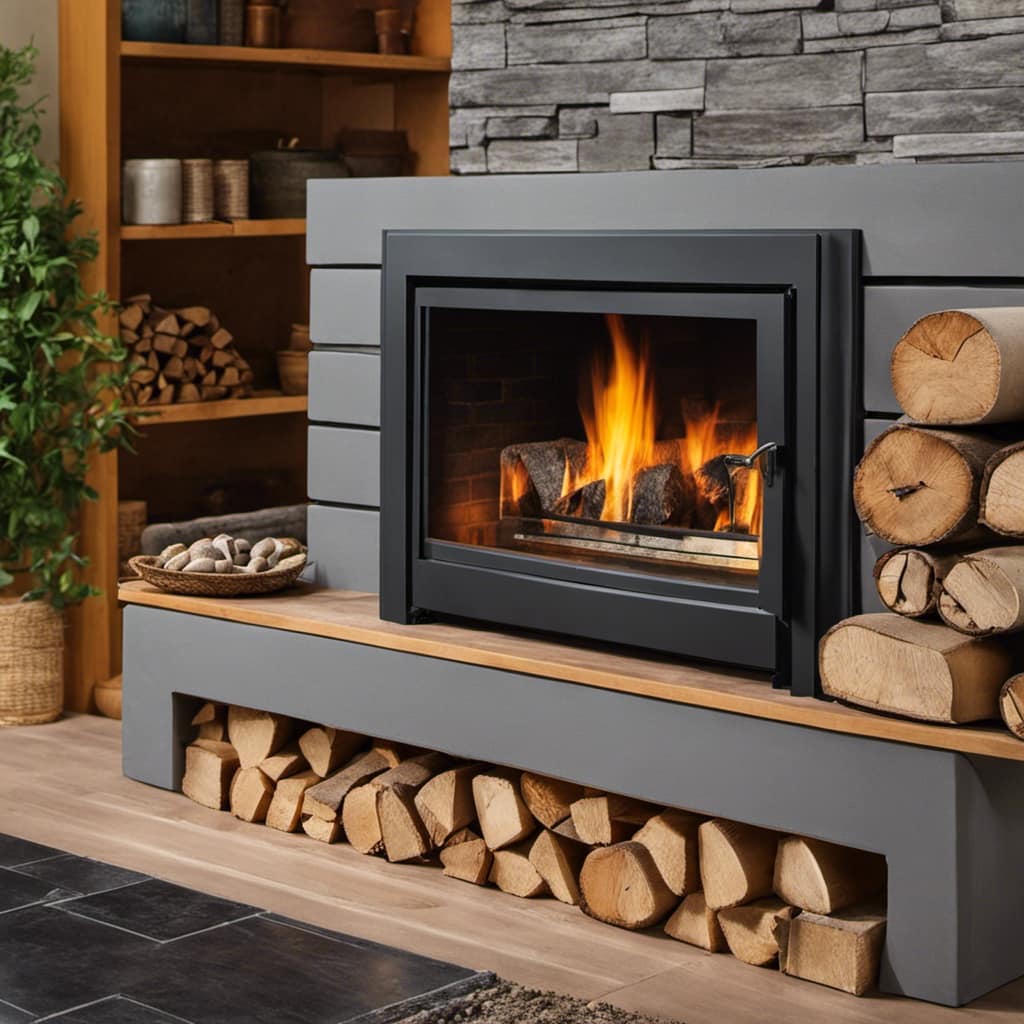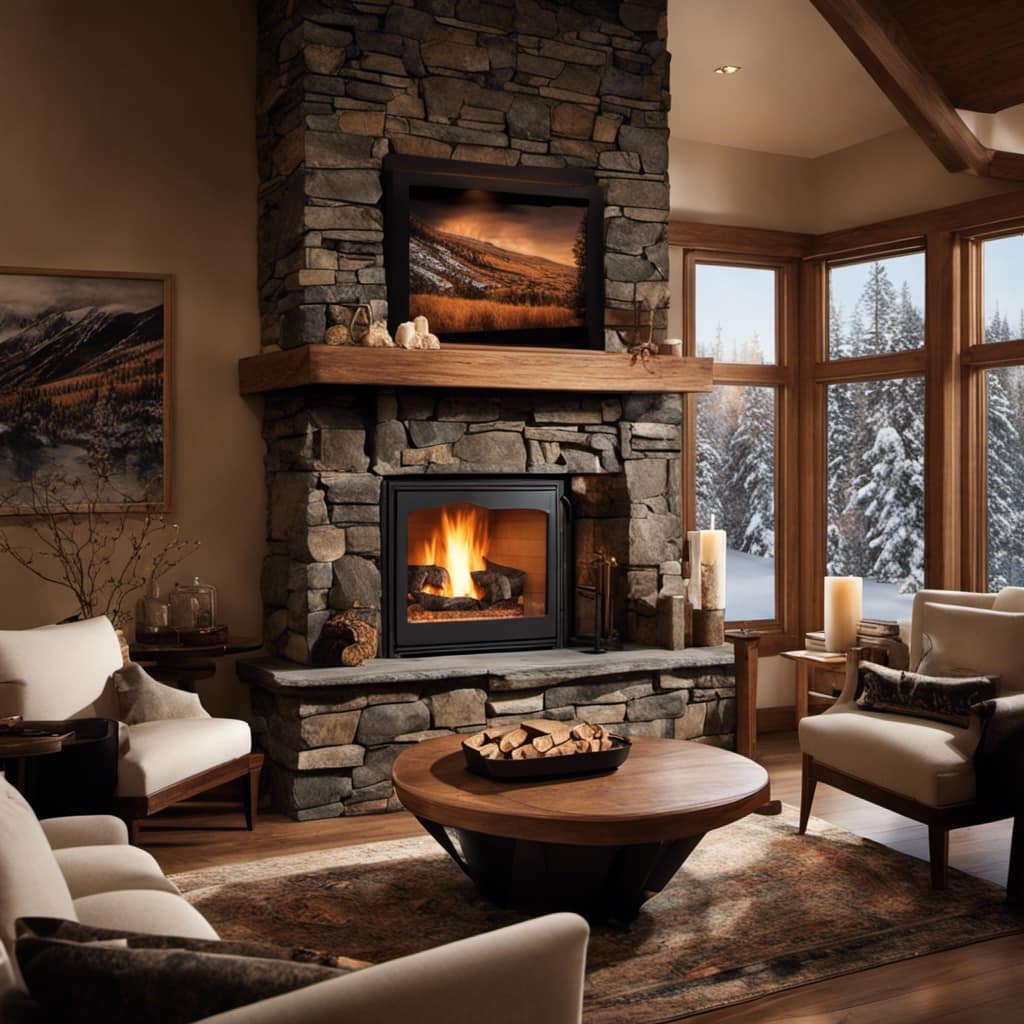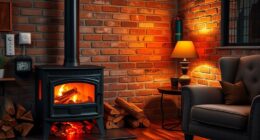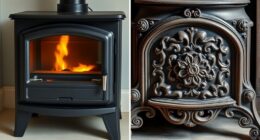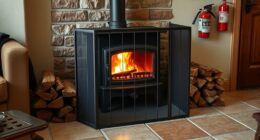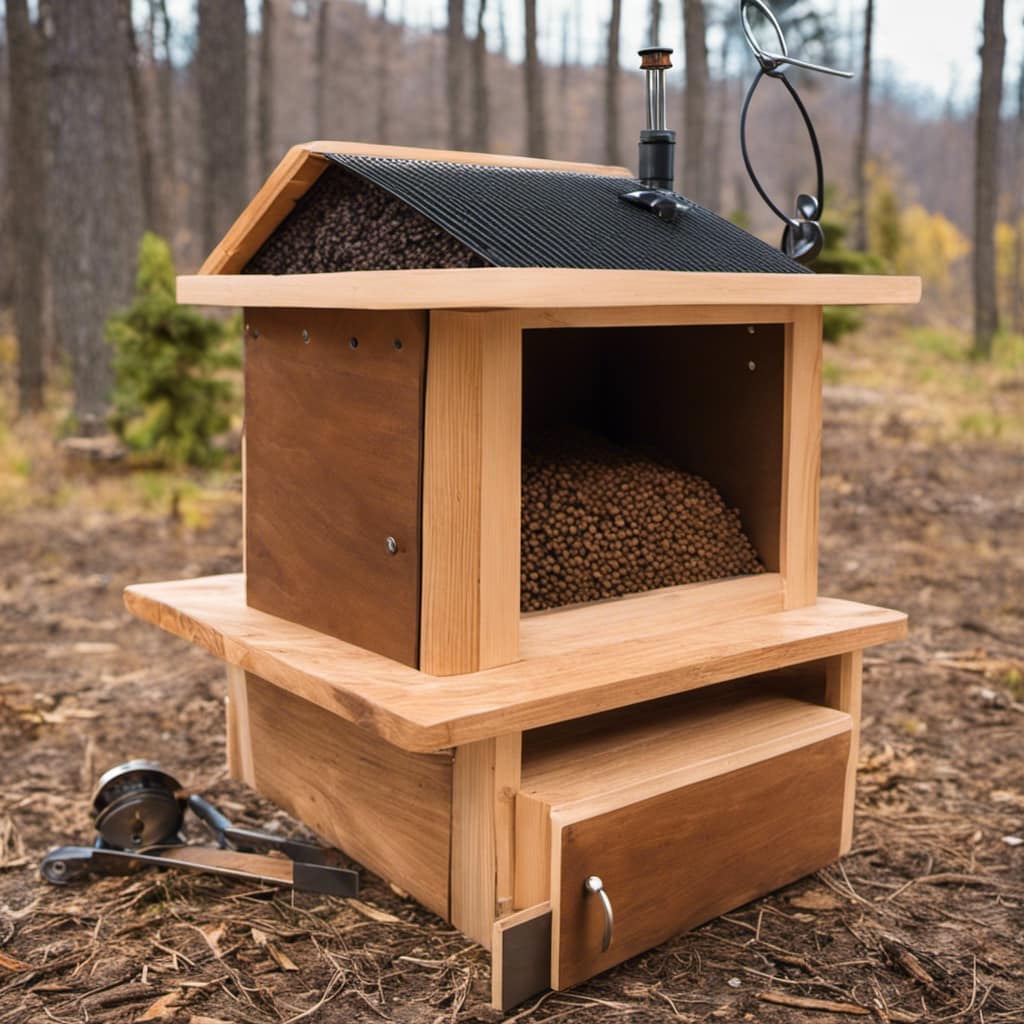
Have you ever experienced your wood stove glass turning black? You are not alone. Many wood stove users encounter this annoying issue.
In this article, I will explain why this happens and provide you with some helpful tips on how to prevent it.
From the combustion process to the quality of wood you use, there are several factors that contribute to the blackening of your stove’s glass.
So, let’s dive in and uncover the reasons behind this frustrating issue.
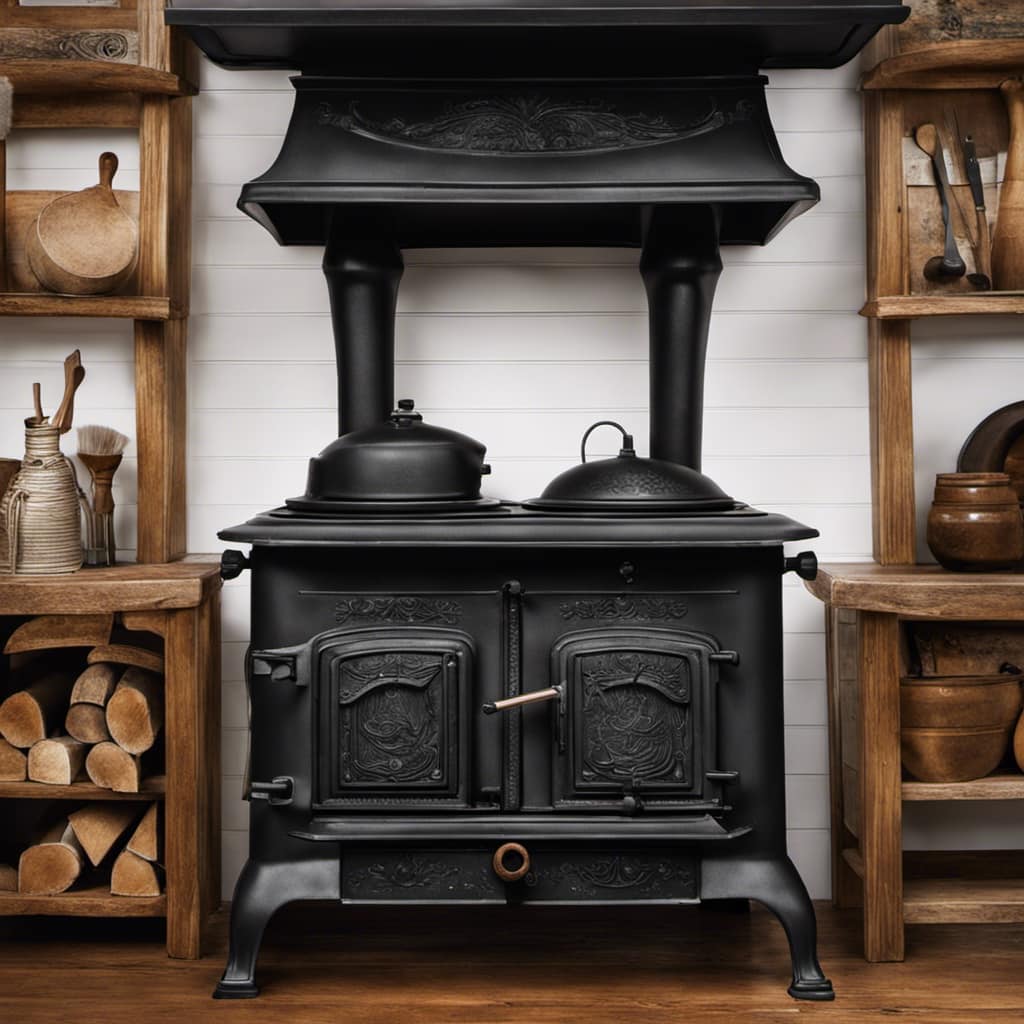
Key Takeaways
- Soot formation and combustion process: Temperature affects the formation of soot, with higher temperatures promoting better combustion and reducing soot particles.
- Quality of wood and moisture content: Hardwoods burn cleaner and produce less soot, while softwoods contain more resin and can lead to more soot buildup. Wet or green wood produces more smoke and creosote.
- Insufficient airflow and incomplete combustion: Insufficient airflow leads to incomplete combustion and soot buildup. Airflow restrictions include clogged air intakes, blocked chimney, closed damper, and dirty stove.
- Creosote and tar buildup: Regular maintenance and cleaning prevent creosote and tar buildup, which are highly flammable and increase the risk of chimney fires. Buildup restricts airflow and decreases fuel efficiency.
Combustion Process and Soot Formation
I can see that the glass on my wood stove turns black due to the combustion process and the formation of soot.
Soot is a byproduct of incomplete combustion, where carbon particles are released into the air. The size of soot particles can vary, ranging from large flakes to tiny nanoparticles.
The formation of soot is influenced by several factors, with temperature being a significant one. Higher temperatures promote better combustion, resulting in fewer soot particles being produced.
However, if the temperature is too low, the combustion process becomes incomplete, leading to the formation of larger soot particles that can stick to the glass surface.

This is why maintaining the right temperature is crucial to prevent excessive soot buildup on the stove’s glass.
Quality of Wood and Moisture Content
The quality of the wood I use and its moisture content can affect the blackening of the glass on my stove. When it comes to wood selection, it’s important to choose hardwoods like oak, maple, or birch, as they burn cleaner and produce less smoke and soot. Softwoods like pine or spruce contain more resin and can lead to more soot buildup on the glass.
Additionally, the moisture level of the wood plays a crucial role. Wet or green wood produces more smoke and creosote, which can result in blackened glass. It’s recommended to use seasoned or dry wood with a moisture content below 20%.
Properly storing and drying the wood before burning it will help reduce the amount of soot and keep the glass on your stove cleaner for longer.
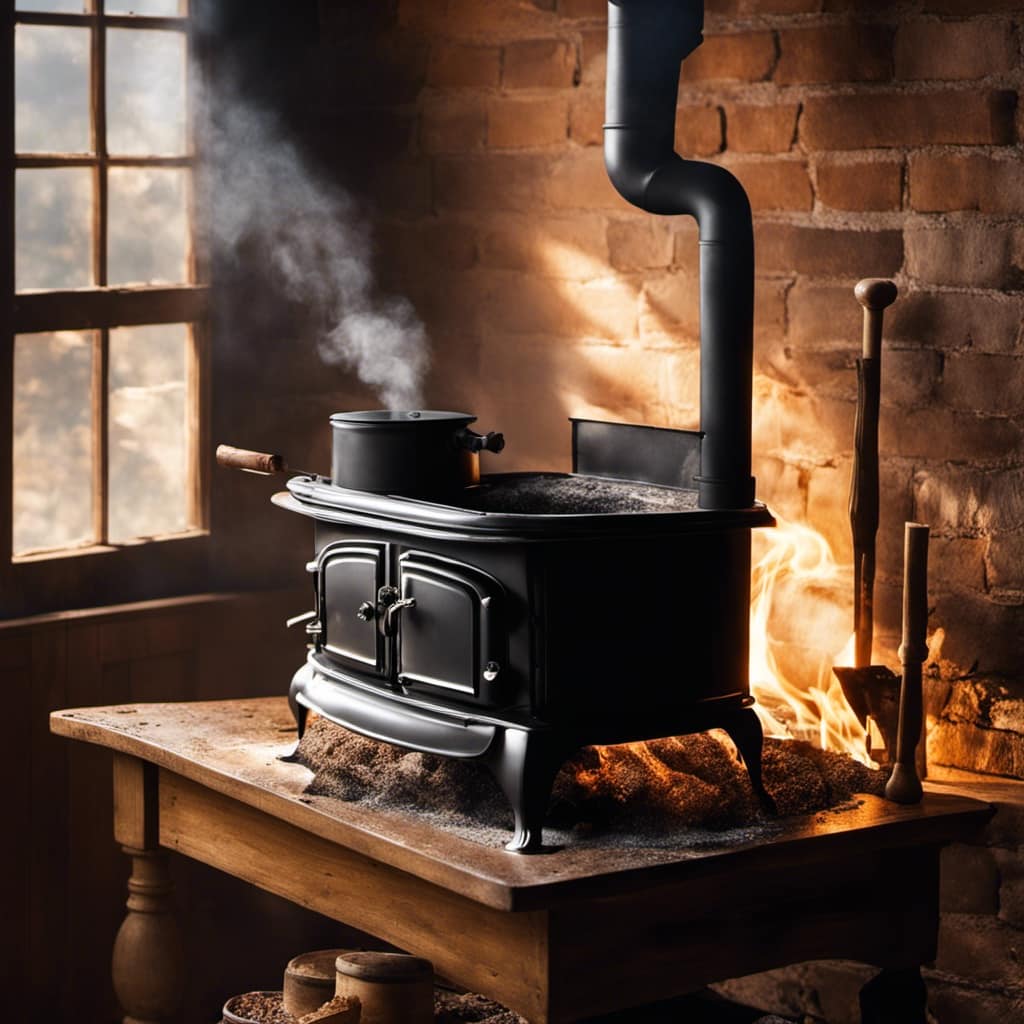
Insufficient Airflow and Incomplete Combustion
Insufficient airflow can lead to incomplete combustion, resulting in a buildup of soot and a dirty stove. When there are airflow restrictions, the wood does not burn efficiently, and this can cause the glass on your wood stove to turn black. To understand this better, let’s take a look at the factors that affect combustion efficiency in a wood stove:
| Airflow Restrictions | Combustion Efficiency |
|---|---|
| Clogged air intakes | Reduced oxygen supply |
| Blocked chimney | Inadequate draft |
| Closed damper | Insufficient air |
| Dirty stove | Poor heat transfer |
These restrictions prevent the wood from burning completely, resulting in the production of soot and other byproducts. To ensure proper combustion and prevent the glass from turning black, it is important to maintain good airflow by regularly cleaning the stove, ensuring a clear chimney, and keeping air intakes open. This will maximize combustion efficiency and keep your wood stove clean and efficient.
Creosote and Tar Buildup
To prevent creosote and tar buildup in my wood stove, regular maintenance and cleaning are essential. Neglecting these tasks can lead to a range of problems, including decreased fuel efficiency, increased risk of chimney fires, and potential damage to the stove.
Here are four reasons why proper maintenance is crucial:
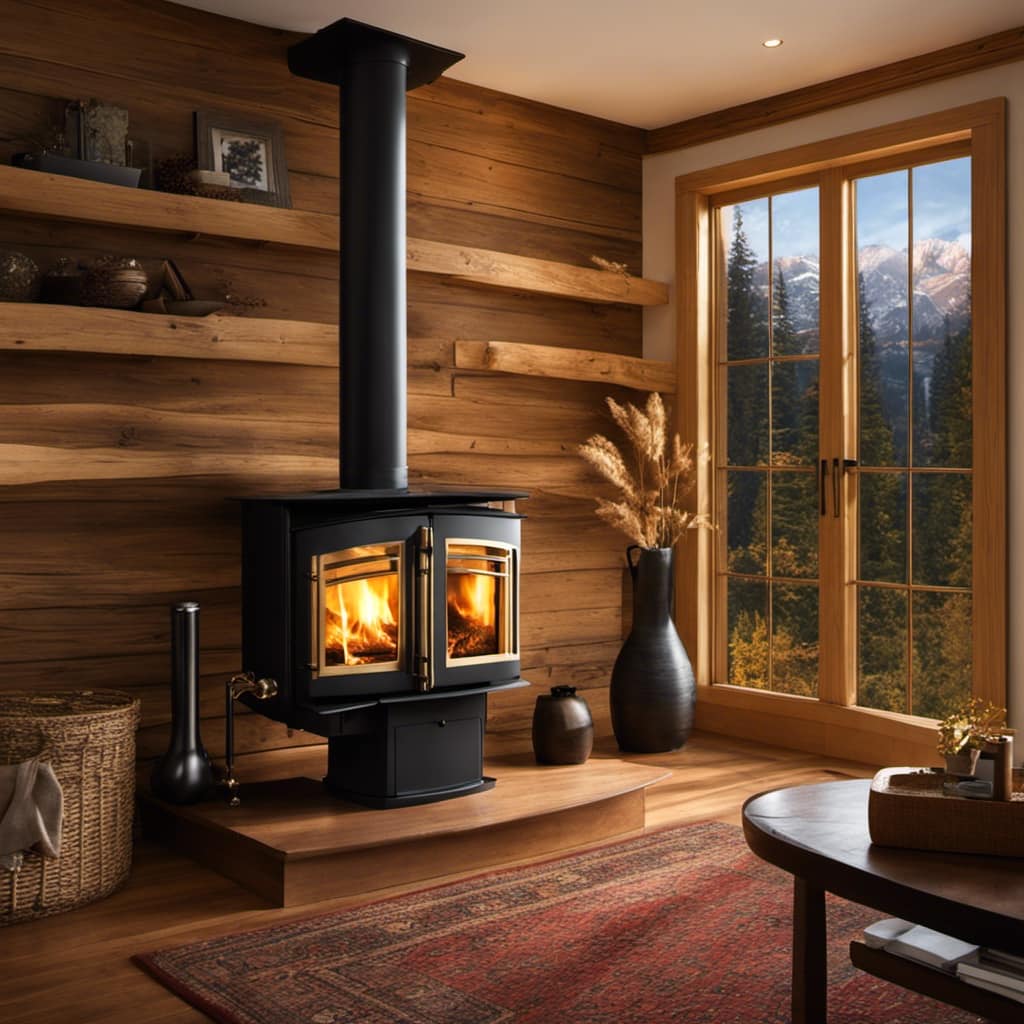
-
Safety: Creosote and tar are highly flammable substances that can accumulate in the chimney, increasing the risk of a dangerous chimney fire.
-
Efficiency: When creosote and tar buildup restrict the airflow, the stove’s fuel efficiency decreases, leading to higher fuel consumption and increased heating costs.
-
Longevity: Regular maintenance helps extend the lifespan of the wood stove, preventing costly repairs or the need for premature replacement.
-
Health: A thorough chimney inspection and cleaning can remove any blockages or debris that may compromise indoor air quality and pose health risks.
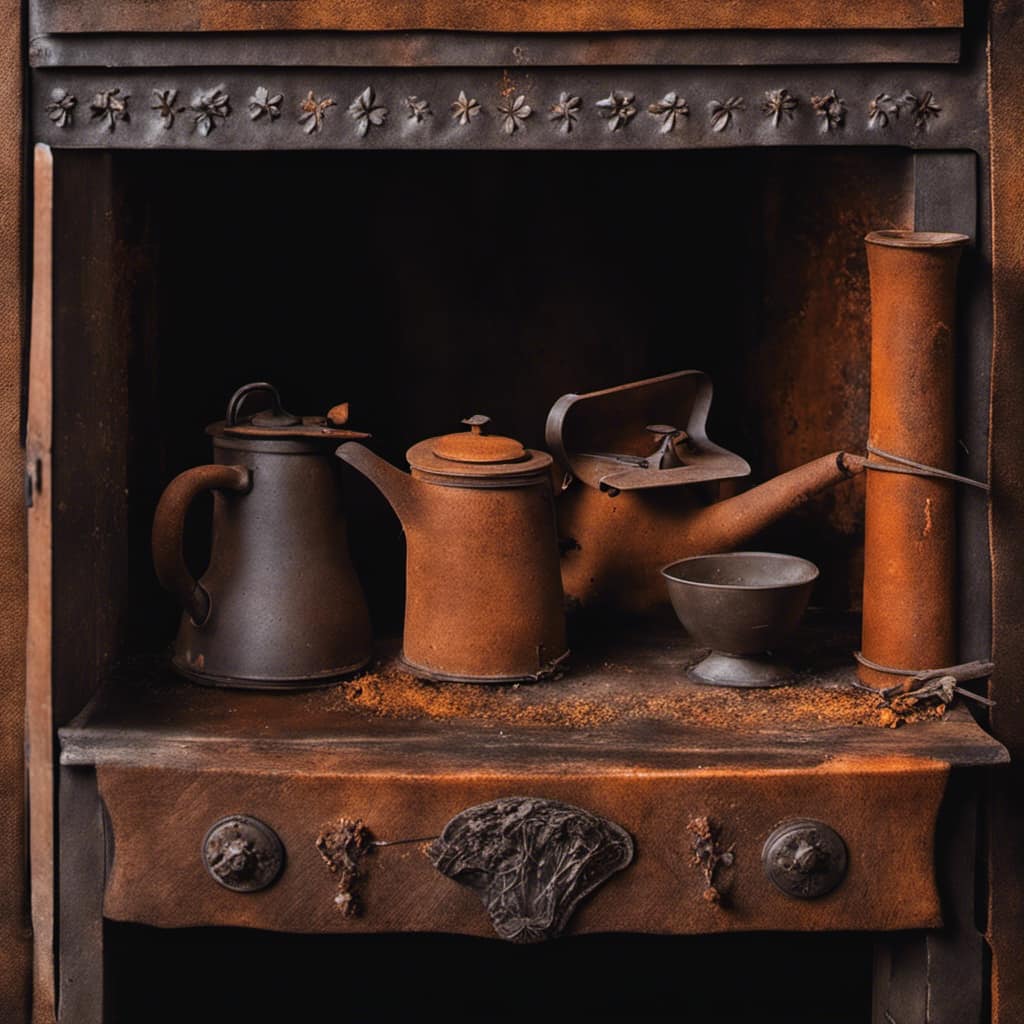
Cleaning and Maintenance Techniques
I regularly clean and maintain my wood stove to prevent creosote and tar buildup. One important aspect of maintenance is replacing the stove glass when it becomes dirty or damaged. This not only improves the appearance of the stove but also ensures efficient and safe operation. When replacing the glass, it is essential to use high-quality, heat-resistant glass that is specifically designed for wood stoves. Additionally, I take preventive measures to minimize future buildup on the glass. This includes using proper fuel, such as well-seasoned hardwood, and avoiding the use of wet or unseasoned wood. Regularly cleaning the stove and chimney, as well as using a creosote remover, also helps prevent the buildup of creosote and tar on the glass. By following these maintenance techniques, I can enjoy a clean and efficient wood stove while minimizing the need for future stove glass replacement.
| Cleaning and Maintenance Techniques |
|---|
| 1. Replace stove glass as needed |
| 2. Use high-quality, heat-resistant glass |
| 3. Prevent future buildup by using proper fuel, cleaning regularly, and using a creosote remover |
Frequently Asked Questions
Can I Use Any Type of Wood in My Wood Stove?
I can use any type of hardwood in my wood stove. However, there are advantages to using seasoned wood. It burns more efficiently, produces less smoke, and helps prevent the glass on the stove from turning black.
How Often Should I Clean the Glass on My Wood Stove?
Cleaning the glass on my wood stove is essential for maintaining its beauty. Regular cleaning helps prevent buildup and ensures optimal viewing of the flames. Here are some tips for keeping your wood stove glass clean.
Is It Safe to Burn Pine or Other Resinous Woods in a Wood Stove?
Burning pine or other resinous woods in a wood stove may not be safe due to safety concerns and environmental impact. Resinous woods can create creosote buildup on the glass, causing it to turn black.
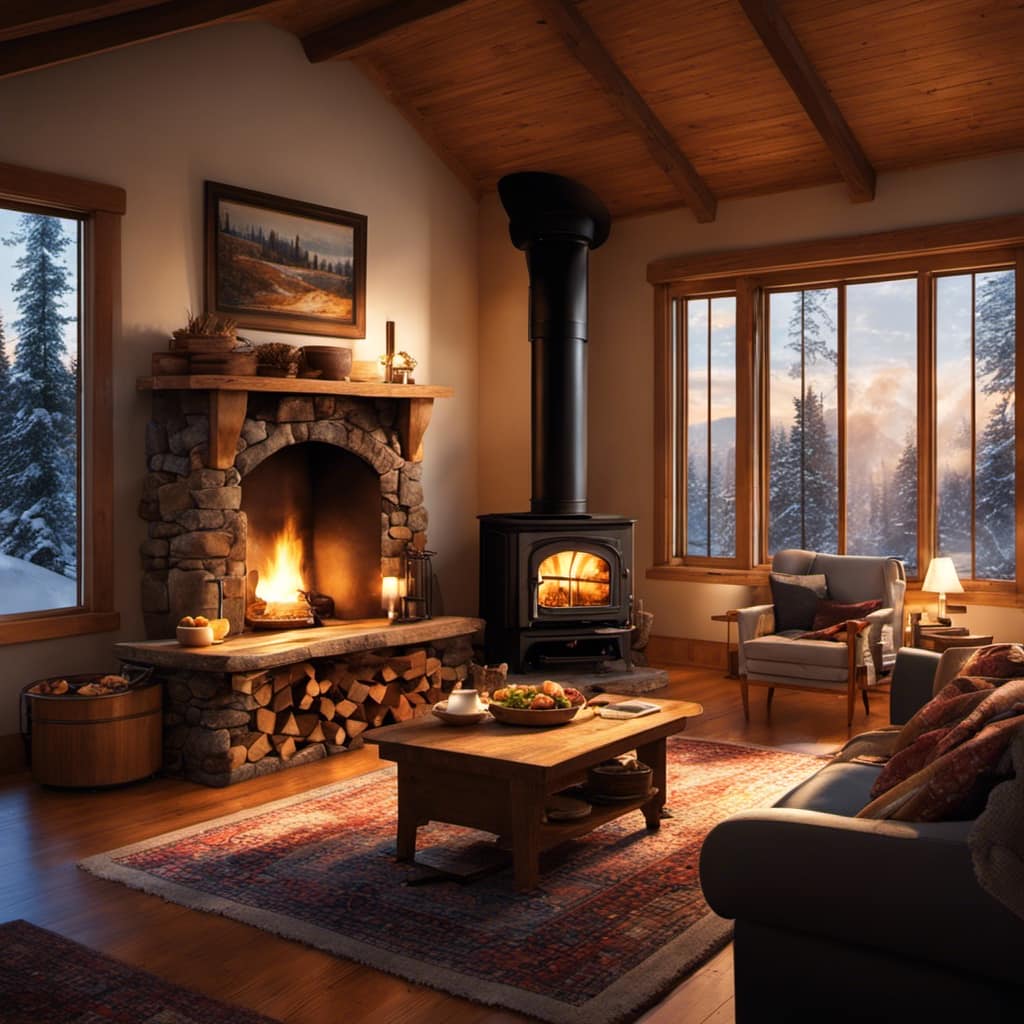
What Can I Do to Prevent Creosote Buildup in My Wood Stove?
To prevent creosote buildup in your wood stove, it’s crucial to ensure proper ventilation. This not only reduces the risk of a chimney fire but also keeps the glass on your stove from turning black.
Are There Any Specific Cleaning Products I Should Use to Clean the Glass on My Wood Stove?
To clean soot from wood stove glass, I recommend using specific cleaning products designed for this purpose. These products are effective at removing stubborn black residue and restoring the glass to its original clarity.
Conclusion
In conclusion, the blackening of the glass on your wood stove can be attributed to various factors such as:
- The combustion process
- The quality of wood used
- Insufficient airflow
- The buildup of creosote and tar
By understanding these causes and implementing proper cleaning and maintenance techniques, you can prevent the glass from turning black and ensure a more efficient and enjoyable experience with your wood stove.
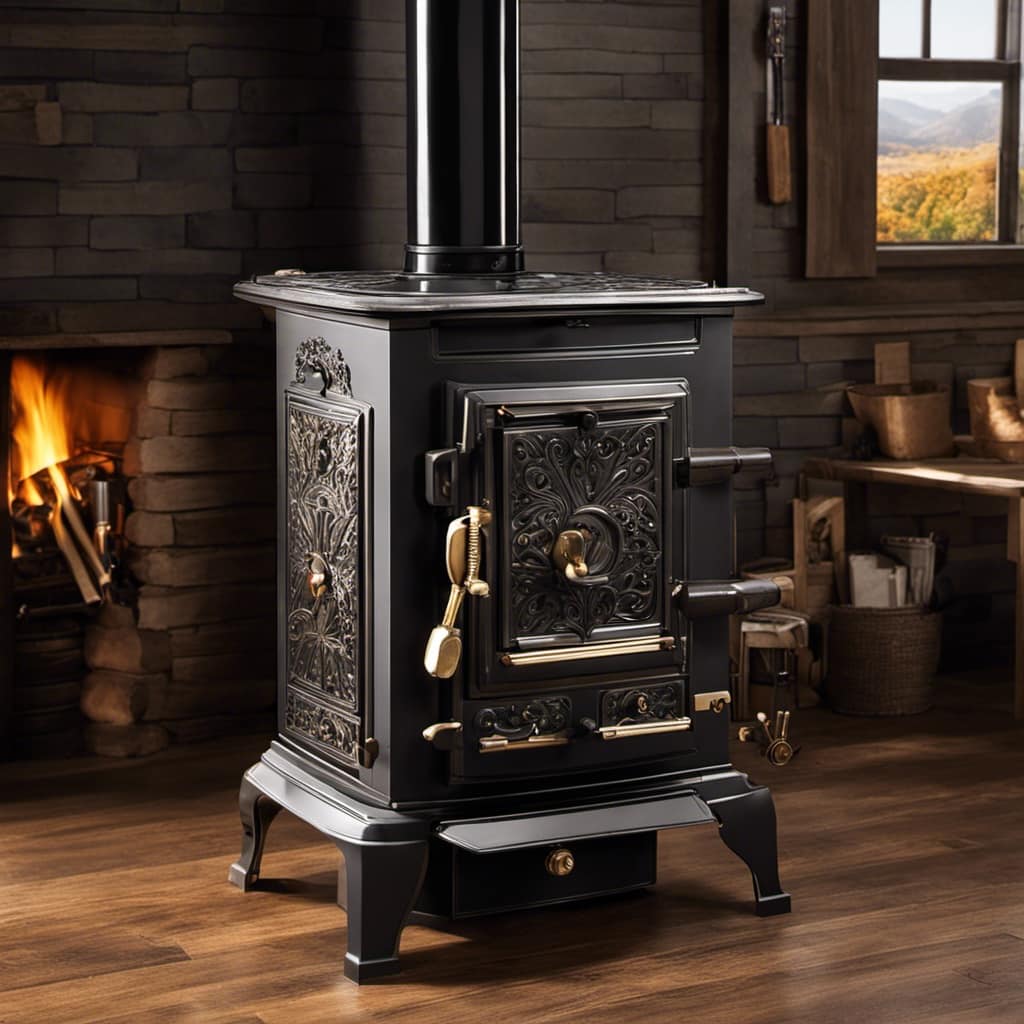
Stay tuned for our upcoming article where we’ll delve deeper into these solutions.
Growing up surrounded by the vast beauty of nature, Sierra was always drawn to the call of the wild. While others sought the comfort of the familiar, she ventured out, embracing the unpredictable and finding stories in the heartbeat of nature.
At the epicenter of every remarkable venture lies a dynamic team—a fusion of diverse talents, visions, and passions. The essence of Best Small Wood Stoves is crafted and refined by such a trio: Sierra, Logan, and Terra. Their collective expertise has transformed the platform into a leading authority on small wood stoves, radiating warmth and knowledge in equal measure.




